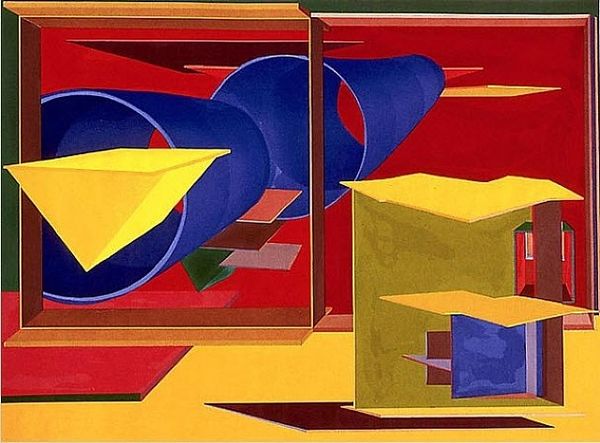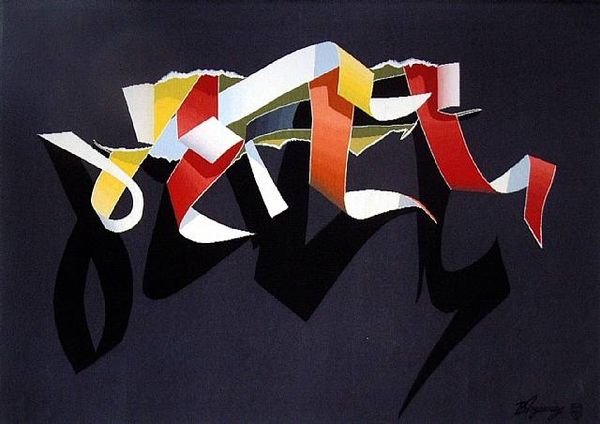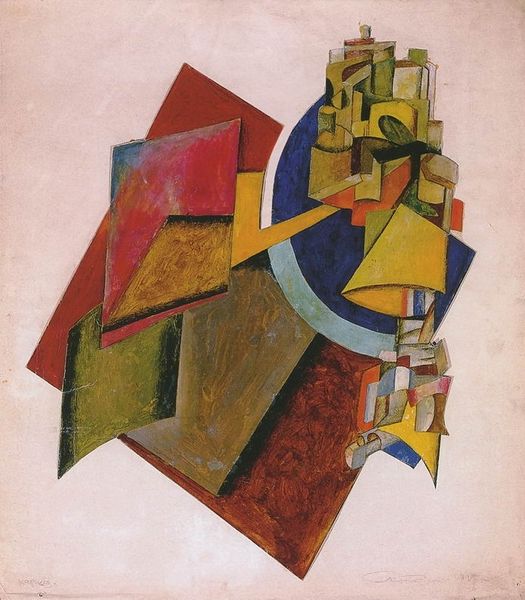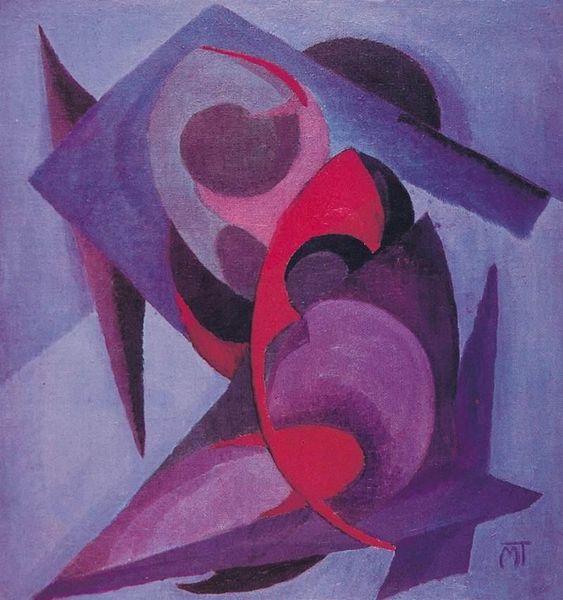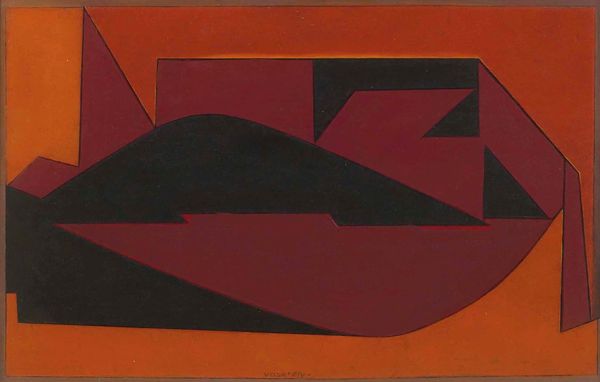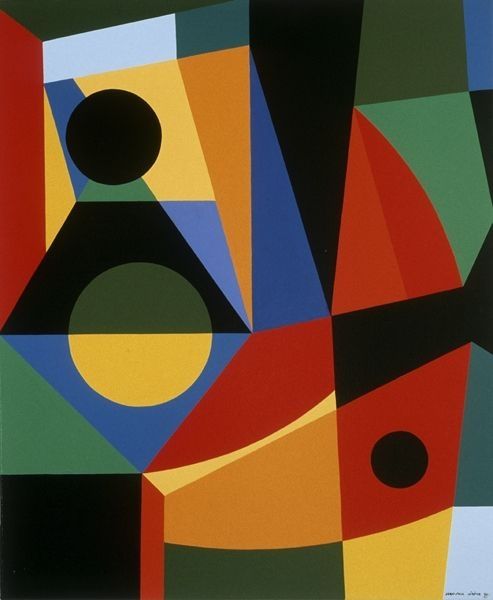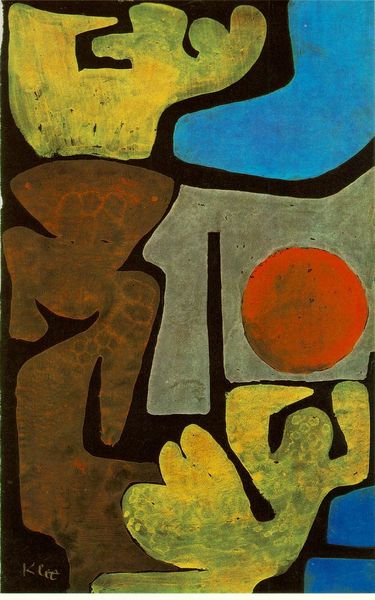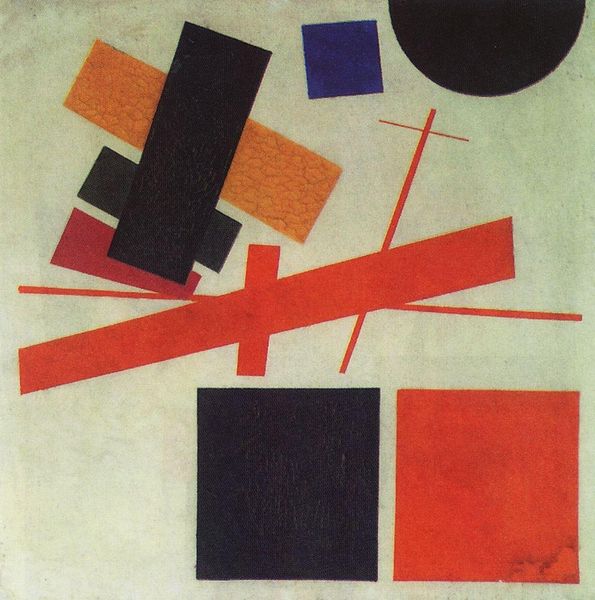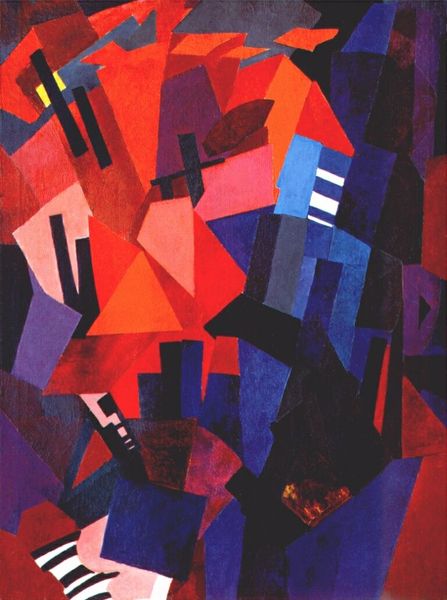
Copyright: John Ferren,Fair Use
Editor: This is "Composition" by John Ferren, created in 1937 using acrylic paint. It's a striking piece; the dominance of the color red is almost overwhelming. What can you tell me about this work? Curator: Well, let's think about the acrylic paint first. While used here, its full impact comes later in art history. Early uses of new industrial materials were critical in breaking down boundaries. Ferren uses the qualities of acrylic to build up layers and create textures. How does the application of the acrylic influence your interpretation of the geometric forms? Editor: It makes them seem less… perfect? More tactile, perhaps. The brushstrokes, while subtle, prevent it from feeling like a cold, mechanical reproduction. Curator: Exactly. And that tension between industrial materials and the hand of the artist is key. The social context of its making in the 30s informs that tension, when technology offered utopian promises, but also threatened manual labor. How do you think Ferren is reacting to that? Editor: Maybe he’s showing how even geometric abstraction can still carry the mark of the artist, of the human. It resists complete industrialization, even with industrial materials. Curator: Precisely. It’s a fascinating exploration of labor and materiality, and how they intersect with social anxieties of the time. Considering the year it was created and that background helps reveal more meaning. Editor: I see what you mean. Looking at it with a materialist lens reveals so much more than just the surface. Thank you. Curator: Indeed. Focusing on materiality and production provides an interesting and thought-provoking view into the art of Ferren and the time period.
Comments
No comments
Be the first to comment and join the conversation on the ultimate creative platform.
